Mainie Jellett (1897-1944) Composition (c.1922) Oil on canvas, 64.5 x 49.5cm x (25 x 19.5'') Signed Provenance: From the private collection of gallery owner John Taylor and his sale Taylor deVeres 21st November 1995, Catalogue No 57, where purchased by current owner Exhibited: ''Mainie Jellett Retrospective Exhibition'', Hugh Lane Gallery Dublin, July - October 1962, Catalogue No. 21 where lent by Miss Bay Jellett, the artist's sister This pure abstract work dates to the early 1920s when Mainie Jellett was completing her period as an assistant to the French cubist painter Albert Gleizes (1881-1953) in Paris. Central to cubism was the rejection of three-dimensional space and a refusal to replicate reality in the artwork. Jellett, along with Evie Hone and other artists, helped Gleizes in the development of a new aesthetic - Translation-Rotation. This involved the selection of colours and shapes which echoed those of the canvas - the static Translation element. Next the artist rotated these basic forms to create a dynamic composition which introduced time and movement into the painting. This latter part of the process comes directly out of cubism. The application of Translation-Rotation can be seen in Abstract Composition. Its interlocking forms of opaque colour are not purely geometric but are part curved and part angular and they are placed on top of each other to create a series of flat planes which reiterate the shape of the canvas. Their gradually diminishing size, revolving forms and differentiation in colour creates a subtle sense of movement in the composition. The paint is thinly applied with brushstrokes barely visible except in one or two places where the planes overlap. Jellett's uncompromising use of abstract form was extremely rare amongst Irish and British artists of this period. Created before Ben Nicholson began his experiments in non-representational painting this work is arguably one of the earliest examples of non-objective art by a British or Irish artist. In terms of Jellett's work it is a rare example of her early use of Translation-Rotation in oil rather than gouache. The work is in some ways more extreme in its austere use of form than her painting Decoration, (1923, National Gallery of Ireland) which shocked critics when exhibited at the Dublin Painters Gallery in 1923. Dr. R?is?n Kennedy April 2012 Mainie Jellett (1897-1944) Composition (c.1922) Oil on canvas, 64.5 x 49.5cm x (25 x 19.5'') Signed Provenance: From the private collection of gallery owner John Taylor and his sale Taylor deVeres 21st November 1995, Catalogue No 57, where purchased by current owner Exhibited: ''Mainie Jellett Retrospective Exhibition'', Hugh Lane Gallery Dublin, July - October 1962, Catalogue No. 21 where lent by Miss Bay Jellett, the artist's sister This pure abstract work dates to the early 1920s when Mainie Jellett was completing her period as an assistant to the French cubist painter Albert Gleizes (1881-1953) in Paris. Central to cubism was the rejection of three-dimensional space and a refusal to replicate reality in the artwork. Jellett, along with Evie Hone and other artists, helped Gleizes in the development of a new aesthetic - Translation-Rotation. This involved the selection of colours and shapes which echoed those of the canvas - the static Translation element. Next the artist rotated these basic forms to create a dynamic composition which introduced time and movement into the painting. This latter part of the process comes directly out of cubism. The application of Translation-Rotation can be seen in Abstract Composition. Its interlocking forms of opaque colour are not purely geometric but are part curved and part angular and they are placed on top of each other to create a series of flat planes which reiterate the shape of the canvas. Their gradually diminishing size, revolving forms and differentiation in colour creates a subtle sense of movement in the composition. The paint is thinly applied with brushst
Mainie Jellett (1897-1944) Composition (c.1922) Oil on canvas, 64.5 x 49.5cm x (25 x 19.5'') Signed Provenance: From the private collection of gallery owner John Taylor and his sale Taylor deVeres 21st November 1995, Catalogue No 57, where purchased by current owner Exhibited: ''Mainie Jellett Retrospective Exhibition'', Hugh Lane Gallery Dublin, July - October 1962, Catalogue No. 21 where lent by Miss Bay Jellett, the artist's sister This pure abstract work dates to the early 1920s when Mainie Jellett was completing her period as an assistant to the French cubist painter Albert Gleizes (1881-1953) in Paris. Central to cubism was the rejection of three-dimensional space and a refusal to replicate reality in the artwork. Jellett, along with Evie Hone and other artists, helped Gleizes in the development of a new aesthetic - Translation-Rotation. This involved the selection of colours and shapes which echoed those of the canvas - the static Translation element. Next the artist rotated these basic forms to create a dynamic composition which introduced time and movement into the painting. This latter part of the process comes directly out of cubism. The application of Translation-Rotation can be seen in Abstract Composition. Its interlocking forms of opaque colour are not purely geometric but are part curved and part angular and they are placed on top of each other to create a series of flat planes which reiterate the shape of the canvas. Their gradually diminishing size, revolving forms and differentiation in colour creates a subtle sense of movement in the composition. The paint is thinly applied with brushstrokes barely visible except in one or two places where the planes overlap. Jellett's uncompromising use of abstract form was extremely rare amongst Irish and British artists of this period. Created before Ben Nicholson began his experiments in non-representational painting this work is arguably one of the earliest examples of non-objective art by a British or Irish artist. In terms of Jellett's work it is a rare example of her early use of Translation-Rotation in oil rather than gouache. The work is in some ways more extreme in its austere use of form than her painting Decoration, (1923, National Gallery of Ireland) which shocked critics when exhibited at the Dublin Painters Gallery in 1923. Dr. R?is?n Kennedy April 2012 Mainie Jellett (1897-1944) Composition (c.1922) Oil on canvas, 64.5 x 49.5cm x (25 x 19.5'') Signed Provenance: From the private collection of gallery owner John Taylor and his sale Taylor deVeres 21st November 1995, Catalogue No 57, where purchased by current owner Exhibited: ''Mainie Jellett Retrospective Exhibition'', Hugh Lane Gallery Dublin, July - October 1962, Catalogue No. 21 where lent by Miss Bay Jellett, the artist's sister This pure abstract work dates to the early 1920s when Mainie Jellett was completing her period as an assistant to the French cubist painter Albert Gleizes (1881-1953) in Paris. Central to cubism was the rejection of three-dimensional space and a refusal to replicate reality in the artwork. Jellett, along with Evie Hone and other artists, helped Gleizes in the development of a new aesthetic - Translation-Rotation. This involved the selection of colours and shapes which echoed those of the canvas - the static Translation element. Next the artist rotated these basic forms to create a dynamic composition which introduced time and movement into the painting. This latter part of the process comes directly out of cubism. The application of Translation-Rotation can be seen in Abstract Composition. Its interlocking forms of opaque colour are not purely geometric but are part curved and part angular and they are placed on top of each other to create a series of flat planes which reiterate the shape of the canvas. Their gradually diminishing size, revolving forms and differentiation in colour creates a subtle sense of movement in the composition. The paint is thinly applied with brushst
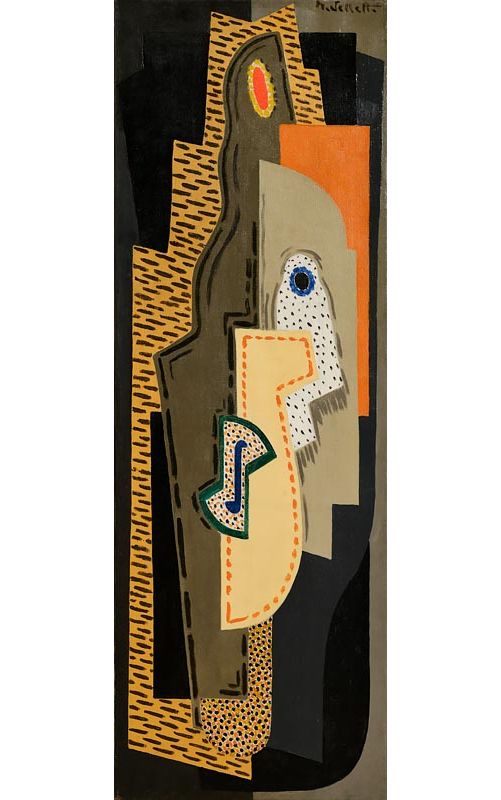
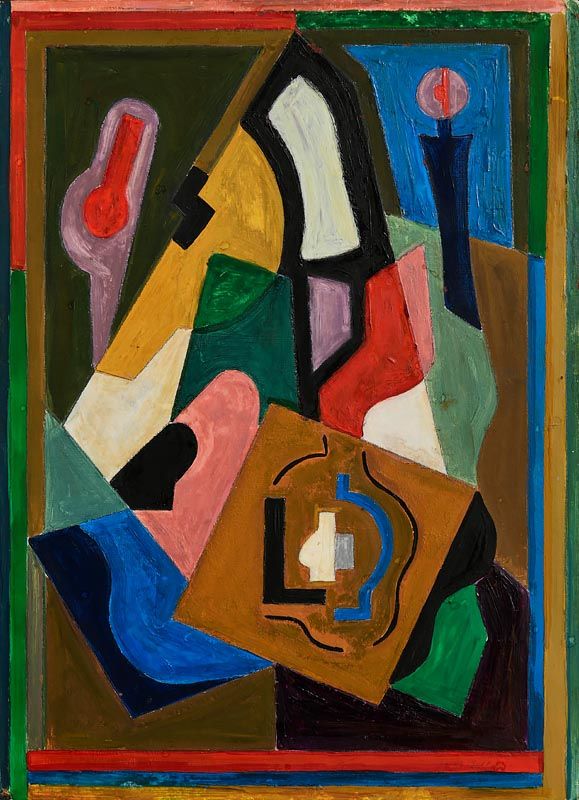


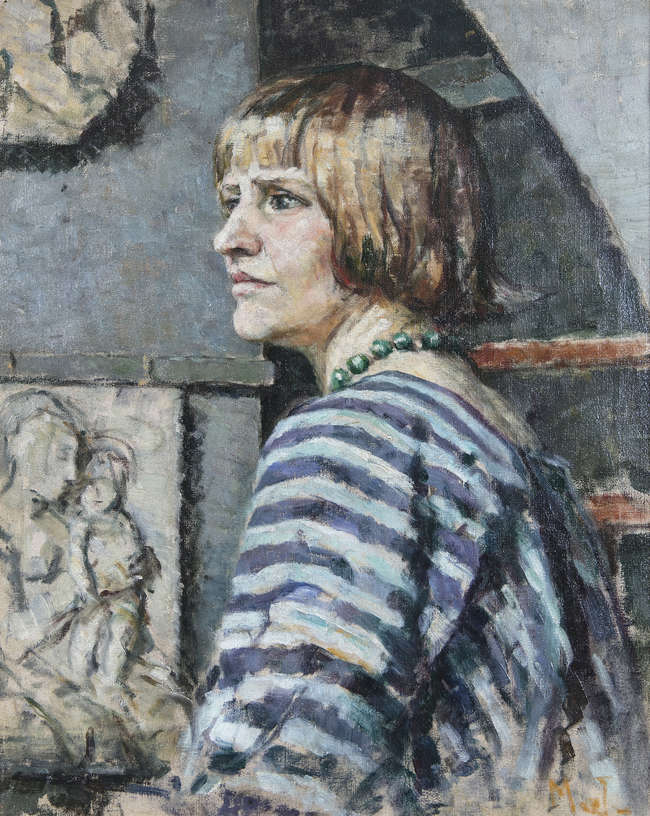
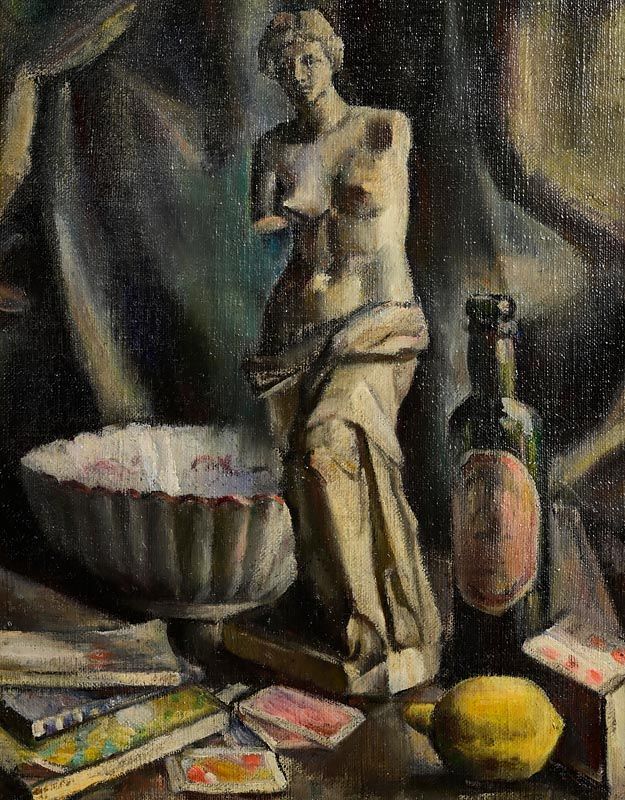

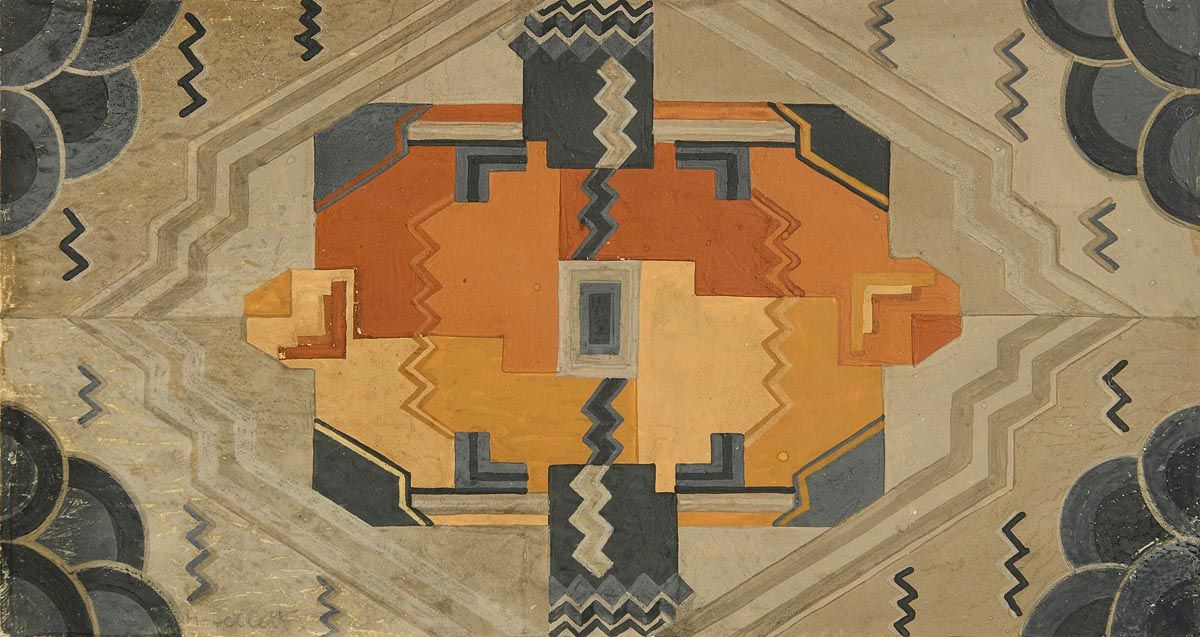






Try LotSearch and its premium features for 7 days - without any costs!
Be notified automatically about new items in upcoming auctions.
Create an alert